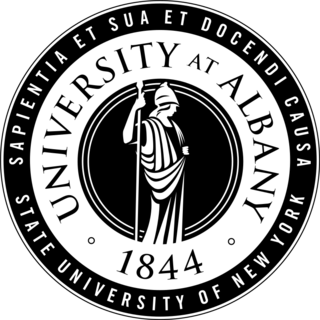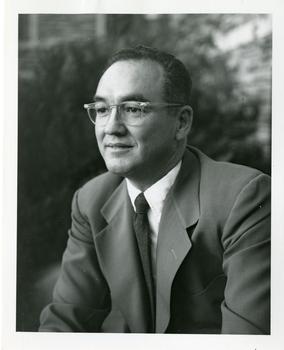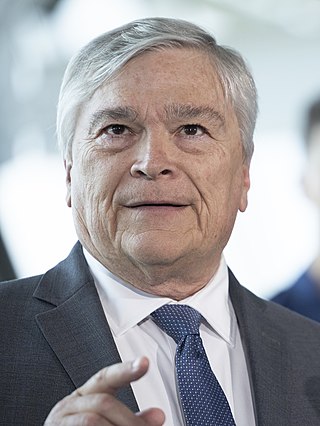Everette Joseph | |
|---|---|
![07.20 [Zi You Min Zhu Yong Xu Zhi Lu ] Zong Tong Can Fang Mei Guo Guo Jia Da Qi Yan Jiu Zhong Xin (NCAR) (48334190917).jpg](http://upload.wikimedia.org/wikipedia/commons/thumb/4/44/07.20_%E3%80%8C%E8%87%AA%E7%94%B1%E6%B0%91%E4%B8%BB%E6%B0%B8%E7%BA%8C%E4%B9%8B%E6%97%85%E3%80%8D%E7%B8%BD%E7%B5%B1%E5%8F%83%E8%A8%AA%E7%BE%8E%E5%9C%8B%E5%9C%8B%E5%AE%B6%E5%A4%A7%E6%B0%A3%E7%A0%94%E7%A9%B6%E4%B8%AD%E5%BF%83%EF%BC%88NCAR%EF%BC%89_%2848334190917%29.jpg/220px-07.20_%E3%80%8C%E8%87%AA%E7%94%B1%E6%B0%91%E4%B8%BB%E6%B0%B8%E7%BA%8C%E4%B9%8B%E6%97%85%E3%80%8D%E7%B8%BD%E7%B5%B1%E5%8F%83%E8%A8%AA%E7%BE%8E%E5%9C%8B%E5%9C%8B%E5%AE%B6%E5%A4%A7%E6%B0%A3%E7%A0%94%E7%A9%B6%E4%B8%AD%E5%BF%83%EF%BC%88NCAR%EF%BC%89_%2848334190917%29.jpg) | |
| Alma mater | |
| Occupation | |
| Employer | |
Everette Joseph is an American atmospheric scientist who serves as the director of the National Center for Atmospheric Research (NCAR) in Boulder, Colorado. [1]
Everette Joseph | |
|---|---|
![07.20 [Zi You Min Zhu Yong Xu Zhi Lu ] Zong Tong Can Fang Mei Guo Guo Jia Da Qi Yan Jiu Zhong Xin (NCAR) (48334190917).jpg](http://upload.wikimedia.org/wikipedia/commons/thumb/4/44/07.20_%E3%80%8C%E8%87%AA%E7%94%B1%E6%B0%91%E4%B8%BB%E6%B0%B8%E7%BA%8C%E4%B9%8B%E6%97%85%E3%80%8D%E7%B8%BD%E7%B5%B1%E5%8F%83%E8%A8%AA%E7%BE%8E%E5%9C%8B%E5%9C%8B%E5%AE%B6%E5%A4%A7%E6%B0%A3%E7%A0%94%E7%A9%B6%E4%B8%AD%E5%BF%83%EF%BC%88NCAR%EF%BC%89_%2848334190917%29.jpg/220px-07.20_%E3%80%8C%E8%87%AA%E7%94%B1%E6%B0%91%E4%B8%BB%E6%B0%B8%E7%BA%8C%E4%B9%8B%E6%97%85%E3%80%8D%E7%B8%BD%E7%B5%B1%E5%8F%83%E8%A8%AA%E7%BE%8E%E5%9C%8B%E5%9C%8B%E5%AE%B6%E5%A4%A7%E6%B0%A3%E7%A0%94%E7%A9%B6%E4%B8%AD%E5%BF%83%EF%BC%88NCAR%EF%BC%89_%2848334190917%29.jpg) | |
| Alma mater | |
| Occupation | |
| Employer | |
Everette Joseph is an American atmospheric scientist who serves as the director of the National Center for Atmospheric Research (NCAR) in Boulder, Colorado. [1]
Joseph graduated from State University of New York College at Cortland with a B.S. in Physics. He earned a Ph.D. in physics from the University at Albany in 1997 with an atmospheric science emphasis. He worked as a postdoctoral research associate at the University at Albany's Atmospheric Sciences Research Center (ASRC). [1] [2]
Joseph directed the Howard University Program in Atmospheric Sciences (HUPAS) from 2008 to 2013 where he and his colleagues increased the number of atmospheric science minority Ph.D. graduates across the country, helping Howard to become a national leader in this effort. At Howard he also taught classes in atmospheric physics, radiation, and remote sensing. Further, he led a major program to improve the ability of space-borne satellites to monitor the atmosphere and to improve the forecasting skill of atmospheric models. [2] [3]
In 2014 Joseph was named director of ASRC at the University at Albany as well as SUNY Empire Innovations Professor in Atmospheric Sciences. His research there focused on improving extreme weather resilience and developing and deploying ground-based and satellite observing systems. He co-led the New York State Mesonet for advanced weather detection and the New York State Center of Excellence for the Weather Enterprise. [2] [3] [4]
Joseph was named director of NCAR in December 2018 following an international search. His appointment was unanimously approved by the board of trustees for the University Corporation for Atmospheric Research (UCAR) which manages NCAR for the National Science Foundation (NSF). He began his employment at NCAR in February 2019. [1]
Joseph has led over $90 million in research grants from the NSF, the National Oceanic and Atmospheric Administration (NOAA), the National Aeronautics and Space Administration (NASA), the Army High Performance Computing Research Center, and other agencies. [4] His research looks at the role of aerosols and certain gases in climate and weather. [2]
Joseph has served on a number of science boards and committees. He joined the UCAR Board of Trustees in 2011 and was elected its vice chair in 2015 and chair in 2017. He has also served on the Board on Atmospheric Sciences and Climate of the National Academy of Sciences, Engineering and Medicine (NASEM); the Steering Committee of the NASEM Decadal Survey for Earth Science and Applications from Space; the NOAA Science Advisory Board; the American Meteorological Society (AMS) Commission on the Weather, Water and Climate Enterprise; the AMS Board on Higher Education; the U.S. Department of Energy Atmospheric Radiation Measurement Climate Research Facility Science Board; and the NASA Science Mission Directorate Research and Analysis Management Operations Working Group. [2] [3] [4]

The State University of New York at Albany, commonly referred to as the University at Albany, UAlbany or SUNY Albany, is a public research university with campuses in Albany, Rensselaer, and Guilderland, New York. Founded in 1844, it is one of four "university centers" of the State University of New York (SUNY) system.
The University Corporation for Atmospheric Research (UCAR) is a US nonprofit consortium of more than 100 colleges and universities providing research and training in the atmospheric and related sciences. UCAR manages the National Center for Atmospheric Research (NCAR) and provides additional services to strengthen and support research and education through its community programs. Its headquarters, in Boulder, Colorado, include NCAR's Mesa Laboratory, designed by I.M. Pei.
The Community Climate System Model (CCSM) is a coupled general circulation model (GCM) developed by the University Corporation for Atmospheric Research (UCAR) with funding from the National Science Foundation (NSF), the Department of Energy (DoE), and the National Aeronautics and Space Administration (NASA). The coupled components include an atmospheric model, a land-surface model, an ocean model, and a sea ice model. CCSM is maintained by the National Center for Atmospheric Research (NCAR).

The US National Center for Atmospheric Research is a US federally funded research and development center (FFRDC) managed by the nonprofit University Corporation for Atmospheric Research (UCAR) and funded by the National Science Foundation (NSF). NCAR has multiple facilities, including the I. M. Pei-designed Mesa Laboratory headquarters in Boulder, Colorado. Studies include meteorology, climate science, atmospheric chemistry, solar-terrestrial interactions, environmental and societal impacts.

Walter Orr Roberts was an American astronomer and atmospheric physicist, as well as an educator, philanthropist, and builder. He founded the National Center for Atmospheric Research and took a personal research interest for many years in the study of influences of the Sun on weather and climate.
The High Altitude Observatory (HAO) is a laboratory of the US National Center for Atmospheric Research (NCAR). HAO operates the Mauna Loa Solar Observatory on Hawaii and a research institute in Boulder, Colorado.

Eric James Barron is an American academic administrator who was the 18th president of Pennsylvania State University from 2014 until 2022. He previously was the 14th president of Florida State University and director of the National Center for Atmospheric Research in Boulder, Colorado.

Warren Morton Washington is an American atmospheric scientist, a former chair of the National Science Board, and currently a Distinguished Scholar at the National Center for Atmospheric Research (NCAR) in Boulder, Colorado.
Antonio Busalacchi Jr. is the eighth president of the Boulder, Colorado-based University Corporation for Atmospheric Research. He began serving as UCAR president in August 2016.

Louis John Lanzerotti is an American physicist. He is a Distinguished Research Professor of physics in the Center for Solar-Terrestrial Research at New Jersey Institute of Technology (NJIT) in Newark, New Jersey.

Yellowstone was the inaugural supercomputer at the NCAR-Wyoming Supercomputing Center (NWSC) in Cheyenne, Wyoming. It was installed, tested, and readied for production in the summer of 2012. The Yellowstone supercomputing cluster was decommissioned on December 31, 2017, being replaced by its successor Cheyenne.

Roger M. Wakimoto is an atmospheric scientist specializing in research on mesoscale meteorology, particularly severe convective storms and radar meteorology. A former director of the National Center for Atmospheric Research (NCAR), Wakimoto in November 2012 was appointed as assistant director of the Directorate for Geosciences (GEO) of the National Science Foundation (NSF).
Paul Rowland Julian, a Fellow of the American Meteorological Society, is an American meteorologist who served as a longtime staff scientist at the National Center for Atmospheric Research (NCAR), was co-author with Roland Madden of the study establishing the Madden–Julian oscillation (MJO), and contributed to the international, multi-institutional Global Atmospheric Research Program (GARP), Tropical Wind, Energy Conversion, and Reference Level Experiment (TWERLE), and Tropical Ocean-Global Atmosphere (TOGA) meteorology research programs. The MJO meteorologic phenomenon he co-discovered is the largest element of the intraseasonal variability in the tropical atmosphere, a traveling pattern arising from large-scale coupling between atmospheric circulation and tropical deep convection. Description of the MJO remains an important contribution to climate research with relevance to modern short- and long-term weather and climate modeling.

Timothy Laurence Killeen is a British and American geophysicist, space scientist, professor, and university administrator. Killeen took office as the president of the University of Illinois system in 2015. He has been the principal investigator on research projects for NASA and the National Science Foundation. Killeen has authored more than 150 publications in peer-reviewed journals as well as more than 300 other publications and papers. He has served on various White House committees and task forces and is a past editor-in-chief of the Journal of Atmospheric and Solar-Terrestrial Physics.
Francis Patton Bretherton was an applied mathematician and a professor emeritus of the Department of Atmospheric and Oceanic Sciences at the University of Wisconsin, Madison.
Richard A. Anthes was a long time president of the University Corporation for Atmospheric Research. The Anthes Building in Boulder, Colorado, is the first UCAR-owned building to be named for an eminent scientist – and a living one at that.” His area of study at the University of Wisconsin, Madison, focused on hurricanes and tropical cyclones. Dr. Anthes taught as a professor for ten years at Pennsylvania State University before accepting a position at the National Center for Atmospheric Research as director of the Atmospheric and Prediction Division in 1981, a position he kept until 1986 when he became director of NCAR. In 1988, he started working as president of UCAR, and retired from that position in 2012. During his presidency at UCAR, he participated or chaired over forty different national committees for agencies such as NASA, NSF, and NOAA. He also established a program aimed at increasing participation in the atmospheric sciences called SOARS .
Venkatachalam Ramaswamy is the Director of the Geophysical Fluid Dynamics Laboratory of the National Oceanic and Atmospheric Administration (NOAA) Office of Oceanic and Atmospheric Research (OAR), studying climate modeling and climate change. "A leading climate scientist", his work is cited as supporting evidence for significant stratospheric climate change. He focuses in particular on radiative transfer models and the hydrologic cycle in the atmosphere. He has actively supported the development of supercomputing approaches that enable researchers to achieve higher resolution and greater complexity in climate models. As a lead author involved in the Intergovernmental Panel on Climate Change (IPCC), Ramaswamy's contributions was recognised by the joint award of the 2007 Nobel Peace Prize to the IPCC.
Maura E. Hagan is a Professor of Physics and Dean of the College of Science at Utah State University. She is a Fellow of both the American Meteorological Society and the American Geophysical Union, and was elected a member of the National Academy of Sciences in 2019.
Roland Aloysius Madden, an American meteorologist, was a staff scientist at the National Center for Atmospheric Research (NCAR) from 1967 to 2002. His research centers on diagnostic studies of the atmosphere. Madden is a fellow of the American Meteorological Society (AMS) and a recipient of the 2002 Jule G. Charney Award of the AMS.

Makenzie Lystrup is an American planetary scientist and Fellow of the American Association for the Advancement of Science and of SPIE, best known as a prominent voice in civil space projects and science policy. Lystrup is the director of the Goddard Space Flight Center. She has previously served as the vice president and general manager for civil space at Ball Aerospace.